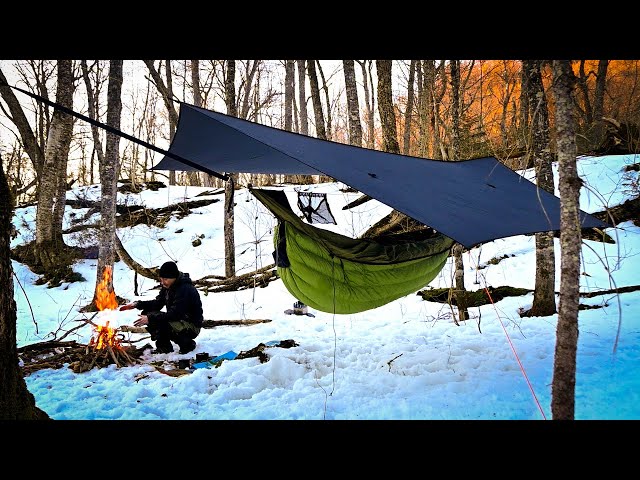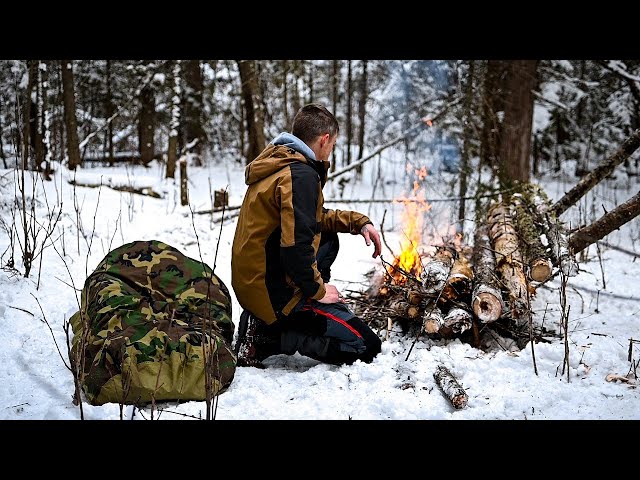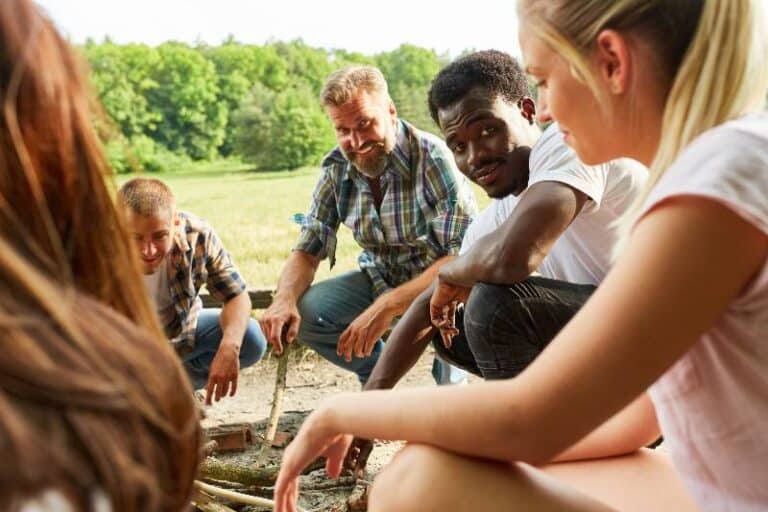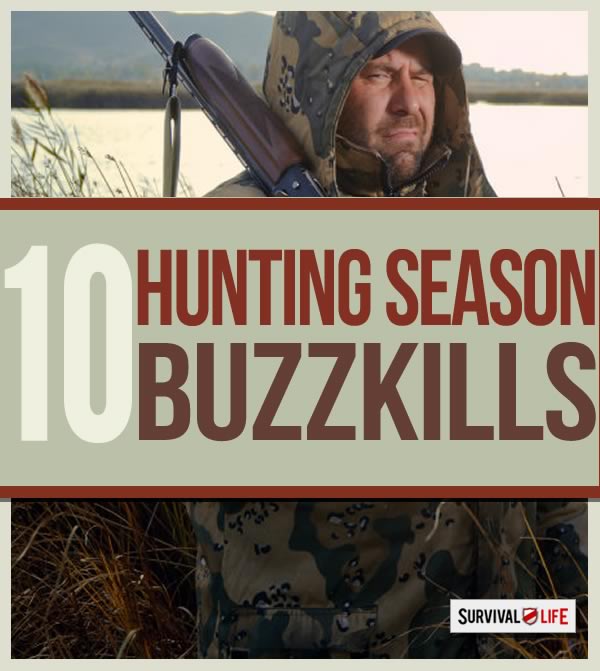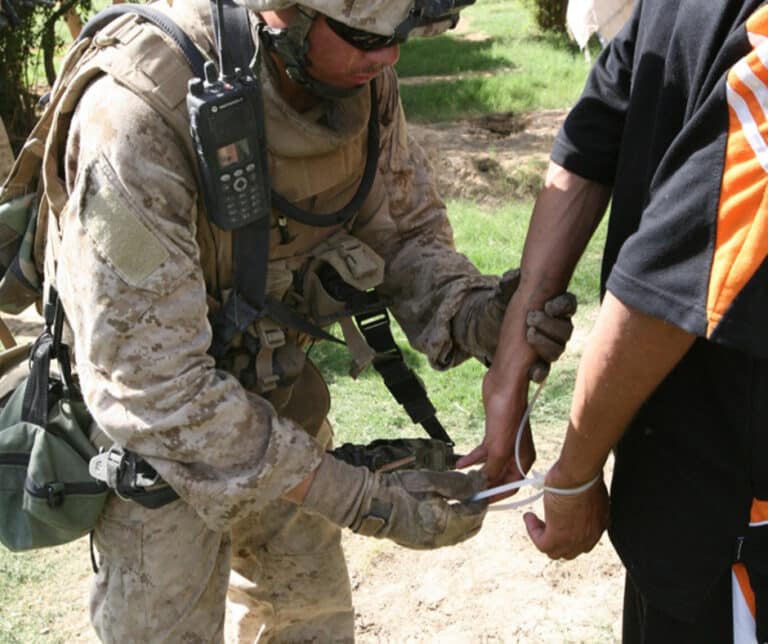Hammock Camping With a Dog in Winter
When to apply a tourniquet – Part 2 #bethedifference #tourniquet #cattourniquet
Winter Camping with no Tent – Snow Filled Forest – Large Campfire – Solo
Where to Get the Best Survival Training
Best Survival Training How to Survive Christmas
Don’t forget to stay connected with us on Facebook, Twitter, Pinterest, and Instagram!
For awesome survival gear you can’t make at home, check out the Survival Life Store!
Follow us on Facebook, Instagram, Twitter, Pinterest, and Tumblr!
**Disclaimer: All content on this site is for informational purposes only. Please read our full disclaimer .**
Editor’s Note: This post was originally published on December 4, 2021, and has been updated for quality and relevancy.
10 Hunting Season Buzzkills
Hunting is a practice that started with our ancient ancestors. For many of us, hunting season is like a yearly pilgrimage to get back to our roots.
Hunting is an exercise in strength and persistence and is a true test of our survivalist skills. Humans have traditionally hunted for food, clothing, and sometimes even for shelter. But besides being a necessary survival skill, hunting is something most of us truly enjoy.
A must have: This is why hunting is so much fun
Sometimes it’s a way for us to bond with our fathers or sons, or just a way to get away from our hectic lives and feel closer to nature.
10 Hunting Season Buzzkills
There are those that will tell you that hunting is a barbaric or outdated practice, but they don’t know what they’re talking about. They don’t know that the practice of hunting still has huge benefits today. First and foremost, may people still need to hunt for food.
But beyond that, hunting helps control animal populations, and the fish and wildlife industry boosts the economy in many regions.
Still, there are a lot of things about the hunting aspect that are, shall we say, less than glamorous. Here are just a few of them.
10 Things That Suck About Hunting Season
Some things about hunting can really chap your ass. Here are our top ten.
10. The Holidays
You are required to show up for some holiday functions or at least the big ones. Too many of them fall during the hunting season.
9. Season length
Hunting season is nowhere near long enough. We all have a big game plan about hunting different areas during different parts of the season, but we most often run out of season.
8. Work
Employers are extremely hung up on attendance. Even during hunting season, they fully expect outdoorsmen and women to wake up and go to work while they could actively pursue game. What happened to this country?
7. Garbage
You follow a strict scent control regiment for your hunting clothes and your body. But there are those in this world who still expect us to haul dirty, stinky garbage out to the curb. I hate chores. What would the deer think if they got a whiff of us? We, as hunters, work very hard to be odorless to get closer to game and yet, we still have to take the garbage out.
6. Football
Hunting has been around longer than football has. A lot of hunters enjoy football. The hunting season overlapping with football season is a scheduling conflict that the media, the NCAA, NFL, and high schools could quickly fix. Just wait until deer season ends.
Like I said, for many hunting is much more than something they just do for food. For some it’s a passion, or a sport, or an almost spiritual experience. Hunting involves both physical and mental stimulation and requires a unique combination of skills. There’s nothing quite like it. Hunting season is a perfect opportunity to take in all of nature’s splendor.
For survivalists, hunting is an ideal activity because it is one of the best opportunities to practice shooting skills. That means that when SHTF and you have to bug out, as long as you have a rifle, you know you’ll have food. Plus, you will know how to use a gun to defend yourself if worse comes to worse.
What other things spoil the hunting season for you? Tell us about them in the comments. Then check out these related posts on our site:
7 Awesome Rifles For Mountain Hunting
Choosing the Best Guns and Ammo for your Arsenal
Sneaky Survival Snare Traps To Keep You Alive
For awesome survival gear you can’t make at home, check out the Survival Life Store!
Follow us on Facebook, Instagram, Twitter, Pinterest, and Tumblr!
**Disclaimer: All content on this site is for informational purposes only. Please read our full disclaimer .**
Editor’s Note: This post was originally published on November 18, 2014, and has been updated for quality and relevancy.
How Prepared Are You?
Knowing who we are, and why we do things are fundamental to our existence. Without these, we tend to walk aimlessly through life and waste time and effort on unnecessary pursuits.
That is why I believe an initial analysis of where we are at, what we want, and where we want to go are very useful in our pursuits towards preparation. Personally, I believe a lifestyle centered around a good quality homestead with quality people around us is best. The problem arises as to HOW to get there from here. This is why the APN (American Preppers Network) was founded. WE can make things happen together. No free-loaders, just good helpful support and direction from fellow seekers.
Here are some basic, yet crucial, concepts to address within your life to help you make more successes than failures! We can do only so much in the world around us, so if each of us is aware of what we are personally looking for, we will be more apt to survive, and for the right reasons.
*** There are NO answers in this column, just suggestions! You must find your own answers, we are only able to help each other, and, in so doing, can we possibly realize and implement our own specific answers. ***
This is a different look at 10 important reasons FOR and AGAINST self preparation. Firstly, it is possible that some of these reasons could go either way, for or against. Why is this so? Well, just about every topic in society has opposing views, and for some reason, there are people out there who disagree with things that others find critically essential. It will help each of us to ponder why any of these topics could be viewed differently from our own perspective. If any reason you see below stumps you as to why someone could believe otherwise, ask around or contact me, and I can share with you some discussions with the ‘people’ I have encountered over my years, it probably will amaze you!
Reasons for Preparation:
__For__________________Against
_______Personal Survival_________
________Family Survival_________
___________Friends_____________
____________Cost______________
___________Freedom____________
____Purpose (why we are here) ____
_______Being Put on a List________
_____Alienation from Others_______
_______Maintain Society__________
______Too Difficult to Do_________
Questions to ask oneself:
Why Survive? What am I here for? Do I have a purpose? Is there a spiritual / religious reason for me?
Who do I want to survive with? Family? Friends? Church members? Why them?
Initial assessment:
I suggest you search through these other topics columnists here have written to see where you stand with them, and where you would like to go from here.
There are no ‘Right or Wrong’ answers here, just your own honest observation of your current situation. Remember, this is for your own use, so be honest. This is when you ‘woke up’ to your situation, and it is up to YOU to decide where you go from here. This can be kept and re-evaluated a couple of months in the future, to see your progress. (Circle your current status in this area and make notes for you.)
Areas of your life:
Personal Health (Status: Poor – Okay – Good – Great) Notes:
__________________________________________________________________________________
__________________________________________________________________________________
__________________________________________________________________________________
Family members’ health (Status: Poor – Okay – Good – Great) Notes:
__________________________________________________________________________________
__________________________________________________________________________________
__________________________________________________________________________________
Financial status (Status: Poor – Okay – Good – Great) Notes:
__________________________________________________________________________________
__________________________________________________________________________________
__________________________________________________________________________________
Focus: (Keeping your head on straight) (Status: Poor – Okay – Good – Great) Notes:
__________________________________________________________________________________
__________________________________________________________________________________
__________________________________________________________________________________
Firestarting: (Status: Poor – Okay – Good – Great) Notes:
__________________________________________________________________________________
__________________________________________________________________________________
__________________________________________________________________________________
Food Preparation: (Status: Poor – Okay – Good – Great) Notes:
__________________________________________________________________________________
__________________________________________________________________________________
__________________________________________________________________________________
Food Storage: (Status: Poor – Okay – Good – Great) Notes:
__________________________________________________________________________________
__________________________________________________________________________________
__________________________________________________________________________________
Water finding: (Status: Poor – Okay – Good – Great) Notes:
__________________________________________________________________________________
__________________________________________________________________________________
__________________________________________________________________________________
Water Purification: (Status: Poor – Okay – Good – Great) Notes:
__________________________________________________________________________________
__________________________________________________________________________________
__________________________________________________________________________________
Water Storage: (Status: Poor – Okay – Good – Great) Notes:
__________________________________________________________________________________
__________________________________________________________________________________
__________________________________________________________________________________
Communications: (Status: Poor – Okay – Good – Great) Notes:
__________________________________________________________________________________
__________________________________________________________________________________
__________________________________________________________________________________
Map Reading: (Status: Poor – Okay – Good – Great) Notes:
__________________________________________________________________________________
__________________________________________________________________________________
__________________________________________________________________________________
Compass Use: (Status: Poor – Okay – Good – Great) Notes:
__________________________________________________________________________________
__________________________________________________________________________________
__________________________________________________________________________________
Mountaineering: (Status: Poor – Okay – Good – Great) Notes:
__________________________________________________________________________________
__________________________________________________________________________________
__________________________________________________________________________________
Personal Equipment: (Status: Poor – Okay – Good – Great) Notes:
__________________________________________________________________________________
__________________________________________________________________________________
__________________________________________________________________________________
Survival Equipment: (Status: Poor – Okay – Good – Great) Notes:
__________________________________________________________________________________
__________________________________________________________________________________
__________________________________________________________________________________
Medicine – Emergency: (Status: Poor – Okay – Good – Great) Notes:
__________________________________________________________________________________
__________________________________________________________________________________
__________________________________________________________________________________
Medicine – Hygiene: (Status: Poor – Okay – Good – Great) Notes:
__________________________________________________________________________________
__________________________________________________________________________________
__________________________________________________________________________________
Medicine – Survival: (Status: Poor – Okay – Good – Great) Notes:
__________________________________________________________________________________
__________________________________________________________________________________
__________________________________________________________________________________
Retreat / Survival location plans: (Status: Poor – Okay – Good – Great) Notes:
__________________________________________________________________________________
__________________________________________________________________________________
__________________________________________________________________________________
Transportation Emergency needs: (Status: Poor – Okay – Good – Great) Notes:
__________________________________________________________________________________
__________________________________________________________________________________
__________________________________________________________________________________
Homesteading: (Status: Poor – Okay – Good – Great) Notes:
__________________________________________________________________________________
__________________________________________________________________________________
__________________________________________________________________________________
Current Events: (Status: Poor – Okay – Good – Great) Notes:
__________________________________________________________________________________
__________________________________________________________________________________
__________________________________________________________________________________
Salvaging / Junking: (Status: Poor – Okay – Good – Great) Notes:
__________________________________________________________________________________
__________________________________________________________________________________
__________________________________________________________________________________
Please let me know what you are looking for, I will find it for you. We are here to help each other, and my take on it is to enjoy ourselves while doing it!
Want to be even more prepared? Check out these related articles:
- Are You Healthy Enough to Survive?
- 10 Traits Successful Preppers Have
- The Myth of the Undercover Prepper
Follow us on Facebook, Instagram, Twitter, Tumblr, and Pinterest!
***Disclaimer: The contents of this article are for informational purposes only. Please read our full disclaimer.***
Editor’s Note: This post was originally published on December 12, 2015, and has been updated for quality and relevancy.
How to Instantly Cut Pounds and Ounces Off Your Bug Out Bag
I’ve been trying to put together the perfect bug-out bag for a long time now.
I kept taking things out and replaced them with lighter, smaller alternatives.
Some of them ended up back in, because I realized they were better and safer, and my family`s safety comes first.
However, I`m still not over trying to shave off as much weight as possible, looking for ways to save space to fit in more crucial items, while keeping it light enough to carry around without breaking my back.
How To Pack The Best Bug Out Bag
In time, I learned that there are certain techniques you can successfully use to save maximum space while keeping everything necessary. Here are 6 of them:
#1: Fill every inch of space
Take boots for example. If you`ve got a pair of spare boots in your bug-out bag, fill them up with other items, whatever you can get in there. Roll underwear and socks tightly and shove them inside your shoes.
Better yet, you can use them to protect fragile objects. Roll the fragile item in a piece of cloth (that you can use further, such as a bandana or a shemagh). Put it in the boot, make sure it stays fixed and, eventually, if there`s more room, cover everything with a pair of rolled socks, just to make sure it`s fully protected.
Here`s another tip. If you pack duct tape (and I strongly suggest you do!), unroll it off its original carton and roll it on a pill container or a bottle. Another way to save space with duct tape is to remove the carton and smash the duct tape on a flat surface. Simple as that!
#2: Use space bags
In case you don`t know what space bags are or how to use them, here`s a video that shows you every step of the way, as well as what you should and should`t pack in them:
These bags saved me a whole lot of space in our bug-out bags. And I do mean a WHOLE lot. But here`s the problem with them: once you open them, everything in there is going to get back to its regular size. Therefore you won`t be able to pack it back up when you don`t need those clothes anymore, because you`d need a vacuum to reseal the bags.
This is a downside that I`m not happy about, but I decided to use space bags anyway. It`s better to carry around some extra clothing when I`m not using it, than to suffer from cold or wear miserable clothes simply because I have no other change in my bug-out bag.
Now, it`s your choice whether you use space bags or not. I suggest you try them out and see if it`s convenient to you. You can`t really make the decision until you see just how much space you can save.
#3: Load up on freeze-dried foods
There`s a bunch of reasons why you should take (mostly) freeze-dried food with you when you bug-out. Here are the most crucial 3:
– It takes up little space and it`s extremely light-weight
Freeze-dried food loses 98% of its water, so it literally cannot get any lighter than that!
– It lasts up to 30 years
However, you have to take temperature into consideration. If you store it at high temperatures or subject it to brutal temperature changes, it will spoil sooner.
– It offers variety
This is my favourite thing about freeze-dried food: it`s diverse. I can pack the ones my family loves and offer them the meals they`re familiar with, even in stressful times of disaster. This is the kind of comfort that everyone needs when SHTF.
#4: Use multiple-use gear
And when I say multiple-use gear, I`m not referring strictly to those knife + fork + spoon + compass + whistle sort of tools. Those are great if they`re good quality. If they`re cheap, don`t bother to buy them. They won`t save space, just the contrary. They`re absolutely useless, so why carry useless things with you when you could fill that space with items that could actually save your life? My advice is to invest in a good multiple-use tool or not invest at all.
But besides these tools, there are plenty of other items with multiple purposes that can save a lot of space. For example:
– Bandanas or shemaghs (cover your head if it`s too sunny, prop a broken limb, protect your airways from wind and dust, stop the bleeding etc)
– 550 cord (you can make one of those 550 cord bracelets and wear it around your wrist, not in your bug-out bag)
– Potassium permanganate (water purification, wound sterilization, fire starter)
#5: Replace tents with tarps
Warning: I do NOT suggest this method during the cold season!
Replacing a tent with a tarp may be the most clever thing you can do to shave off weight off your bug-out bag. A tarp is a multiple-use item, it`s light-weight, resistant to wind and rain and it`s very easy to carry around.
You can spread it on the ground if it`s wet or muddy. You can make a perfectly secure shelter if you want to protect yourself from rain or sunlight. You can use it as a wind stopper. You can sit down on it to eat with your family. You can also wrap other items in it to prevent them from getting wet. You can make a stretcher so you carry injured people around. Or you can even wrap a tarp around a person, to maintain body heat.
However, replacing tents with tarps is not the best idea during cold season, as tarps do not offer full isolation. That`s why I only recommend tarps in spring and summer.
What’s your take?
Do you have your own tips and tricks that shave a few pounds off of your B.O.B.?
Feel free to share them below.
Read more with these related articles on our site:
- The Ultimate Bug Out Bag List
- Your First Bug Out Bag – 50 Essentials For Your Kit
- 10 Multipurpose Items for Your Bug Out Bag
Follow us on Facebook, Instagram, Twitter, Tumblr, and Pinterest!
***Disclaimer: The contents of this article are for informational purposes only. Please read our full disclaimer.***
Editor’s Note: This post was originally published on October 25, 2013, and has been updated for quality and relevancy.
Your Family Survival Plan Spiritual Preparedness
So you’ve heard the wake-up call and decided that it’s time to put together a family survival plan. Where do you start? Well, it’s like any good effort. You start with the intangible aspects first. You might think of this as being the “spiritual” side of preparedness.
What does that mean? Well, before anything is created in the physical, we know that it is first created in the mind (though some call it the heart)—that is the spiritual aspect of humankind.
Consider how a high-rise building, a bridge, or a house is built. Before the finished product comes into being, architects and designers are involved in envisioning, studying, measuring, drawing, and planning.
In a like manner, for your family survival plan to be solid, sturdy, and lasting, you may wish to approach it at first as an architect would. You don’t want to jump into “piling up bricks and mortar, lumber, metal, and glass”—and then discover your building is built on sand!
Consider how the Survival Preparedness Rules of Three apply:
(From the book “Doctor Prepper’s Making the Best of Basics: Family Preparedness Handbook”, chapter 4, “The Path to Family Preparedness”)
Building a Spiritual Foundation
First, let’s look at the spiritual qualities that are the foundation for building your personal or family survival plan:
- a deep and abiding love for your family
- a strong desire to protect them
- acceptance that yours is a sacred duty to responsibly prepare your family physically, mentally, and practically for an uncertain future
- courage to make the tough decisions—the first one being to commit to protecting your family
- ability to act on your decisions and keep taking the next step(s)
- gratitude for your opportunity to do something now before you need it
- fortitude to keep going when the going gets tough
- faith in your abilities
- trust in your Maker—to guide you in what to do, where to go, and how to proceed—and humility to ask for help
- willingness to sacrifice the less important expenditures of time, money, and focus on those things that will provide the long term feeling of the peace of preparedness
- readiness to do whatever it takes
- charity to act not only in the best interest of your own family, but to share the knowledge and skills you acquire with your extended family, neighbors, and coworkers.
- And finally…hope for a bright future
Evaluate yourself in relation to these qualities stated above. Are you ready to move forward?
Know that one of the advantages of choosing a preparedness lifestyle is that you continue to mature in these spiritual qualities as you step forth in faith.
Developing Commitment to Preparedness
One of the great benefits of preparedness is ongoing personal growth. Each time you learn a new survival skill, you grow in your confidence to be able to handle the emergencies that life throws your way.
You’re reading this blog because you are, at the very least, concerned about protecting your family. The real question is: are you committed to protecting your family?
Many people make the choice to become prepared. But there is a big difference between making a choice and making a commitment!
Don’t confuse decision with action!
This story illustrates the magnitude of difference between choosing a plan and committing to a plan:
Three frogs are sitting on a lily pad in a small pond. One hungry frog ponders for a moment after looking at some ants on the shore. He then tells his two frog friends he’s going to jump from the lily pad and onto the bank of the pond to get some ants for lunch.
How many frogs are then left on the lily pad?
Everyone assumes the answer to be two frogs––but the fact is that only a decision was made––and all three frogs are still sitting on the pad.
The lesson? A decision is not an actual commitment! A choice is a first step to commitment––but it is not the commitment!
Do not procrastinate the time of implementing your family’s preparedness plan. You can make preparedness become a reality only when you act on your decision and put your plan into action!
Next time: The Path to Family Preparedness
©2014 James Talmage Stevens. Content from Making the Best of Basics, ed. 12.5
This article is adapted from Doctor Prepper’s Making the Best of Basics.
Get your copy here.
Want to know more? Check out these related articles:
- What Are Your Survival Objectives?
- Family Preparedness: What Are Your Survival Principles?
- Survival Preparedness – For the Bible Tells Me So
Follow us on Facebook, Instagram, Twitter, Tumblr, and Pinterest!
***Disclaimer: The contents of this article are for informational purposes only. Please read our full disclaimer.***
Editor’s Note: This post was originally published on January 20, 2016, and has been updated for quality and relevancy.
Great Smoky Mountains Camping Survival Life National Park Series
Thinking about a Great Smoky Mountains National Park camping trip? What are you waiting for?
There is not question that the Great Smoky Mountains is the most popular national park in the country. In fact, more than 10 million people visited the Smokies last year. The park is considered an international biosphere reserve by the United Nations because it has hundreds of species of mammals, birds, fish, amphibians and reptiles.
About Great Smoky Mountains National Park: Quick Facts
- The park covers an area roughly 800 square miles or 520,000 acres.
Cellular Service
There are no cell towers operating within the Great Smoky Mountains National Park. Cellular service that may be picked up are coming from sites located outside the park. High elevation areas can access services but they can easily be obstructed by rocks, hill and even clouds. To put it simply, there is no stable cellular coverage in the Smokies.
How to Properly Escape a Zip Tie Restraint
Zip ties are cheap and easy to come by, making them a very popular option when it comes to effectively restraining a human being. These things are no joke! So, we though it might be important to teach our readers how to escape from them.
You might think you could easily break free of these plastic handcuffs, but once you’re in the restraint, you’re pretty much stuck. Unless, you know a couple of secret evasion techniques.
Check out the step-by-step instructions below for getting out of some insane situations that result in your arrest or kidnapping.
Method 1: Pop The Lock
- The first method is similar to escaping duct tape.
- When you are getting zip-tied, make sure you keep your elbows together and bend forward.
- Next, you need to have the lock in the middle of your hands. This allows you to pop the lock, later. If the lock is not in the middle of your hands, you need to maneuver it, or use your teeth to reposition the lock.
- Put your hands over the head, come down past your hips out to the side. The lock will pop right off.
- Obviously, not everyone can do this method because everyone has different strengths.
Method 2: Slip Out
According to this Buzzfeed video above, you can also do the following:
- Place hands together with palms clenched
- Maintain tension as zip-tie is tightened
- Turn palms so they are facing each-other
- Shimmy them back and forth until you’re free
Method 3: Use Friction
- This second method is similar to escaping rope by using paracord.
- Just like with escaping rope, thread the paracord through your hands. Create a loop at both ends of the rope.
- Place the loops around your feet and lay on your back. Go through the bicycle motion. The paracord should pop off almost immediately.
- Zip ties should never be able to intimidate you again. Have you used a different method? We would love to hear it in the comments below.
Check out these related articles:
7 Self Defense Video Techniques You Need To Know
DIY Home Security for Preppers Badass SHTF Home Defense
Follow us on Facebook, Instagram, Twitter, Tumblr, and Pinterest!
***Disclaimer: The contents of this article are for informational purposes only. Please read our full disclaimer.***
Editor’s Note: This post was originally published on October 10, 2019, and has been updated for quality and relevancy.


